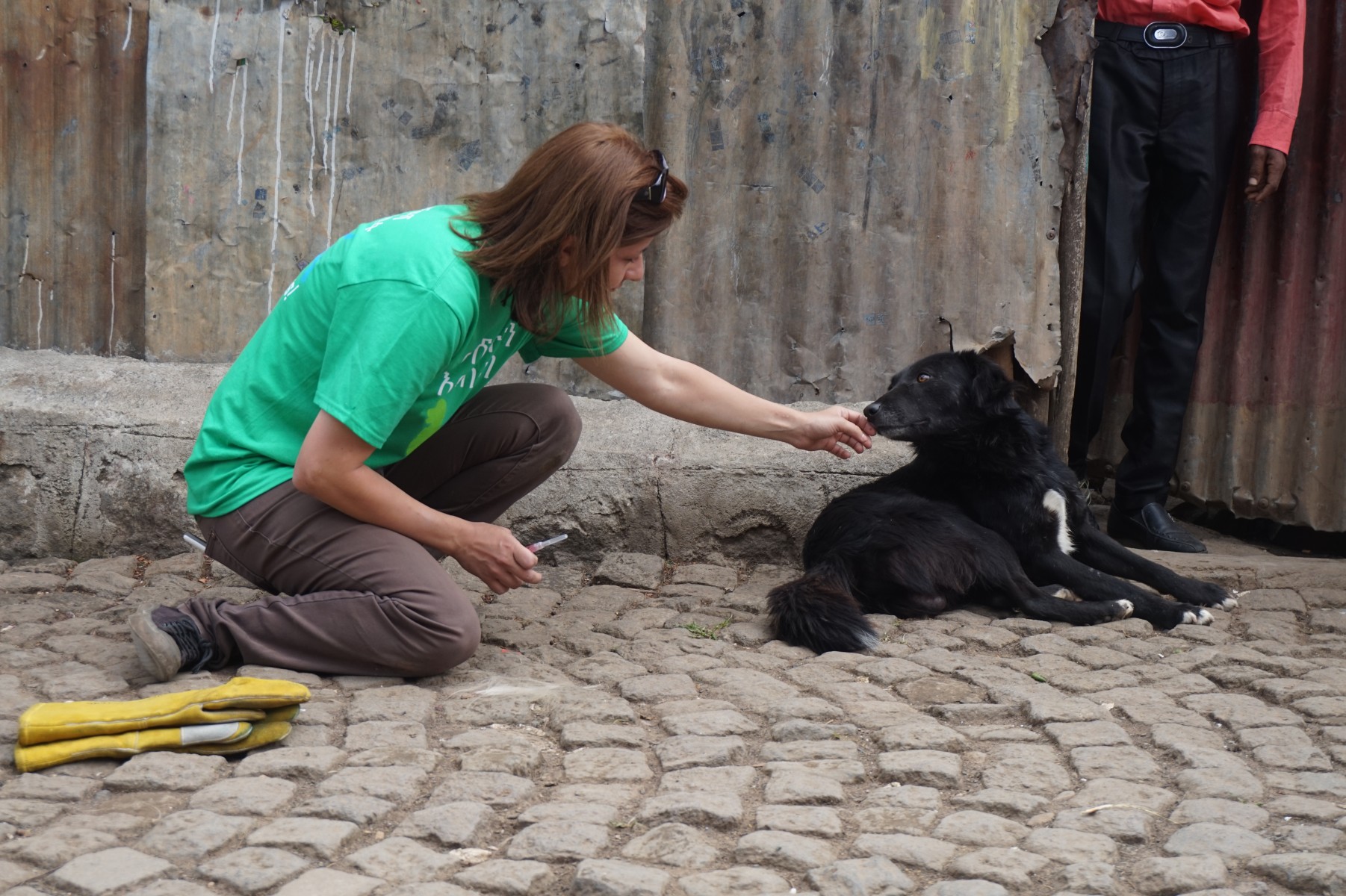Ohio State’s One Health effort connects collaborators around the globe

Add me on LinkedIn (opens in new window)
|
Emily Caldwell Ohio State News |
In 2006, three deaths and 276 illnesses in 26 states were traced to pre-washed and bagged spinach contaminated with E. coli bacteria, costing the industry an estimated $100 million and changing the way people ate spinach for years. An investigation found the same strain of E. coli in the spinach, the crop field soil, an uphill cattle farm, wild pigs living in the area and a stream that was used for irrigation.
The case is a good reminder of the importance of working across disciplines and administrative barriers using the One Health strategy to more fully understand and address the links between animal, human and plant health and the environment, says Wondwossen Gebreyes, executive director of The Ohio State University’s Global One Health initiative (GOHi). One Health is a massive global undertaking characterized by widespread collaboration, and its relevance to individuals can be hard to explain.
Describing an E. coli outbreak from the point of view of those affected is an effective way to communicate to the public about how human, animal and environmental interactions can lead to disease, according to Barbara Kowalcyk, assistant professor of food science and technology at Ohio State.
Presenting at the One Health Day Symposium held at Ohio State earlier this month, Kowalcyk was part of a panel of experts discussing strategies for how to explain the implications of One Health to lay audiences at home and abroad.
“A tool I use a lot is storytelling. It’s effective for communicating science,” Kowalcyk told attendees.
Food safety is among the significant world problems that the One Health movement is trying to solve, along with antimicrobial resistance, zoonotic diseases that spread between animals and humans, climate change and environmental toxins.
GOHi leaders held the symposium to bring the local and global community together for an update on the initiative’s research, training and outreach efforts and in recognition of One Health Day, observed annually on Nov. 3.
Presentations made by representatives from Ohio State, state and federal agencies, and international partners reflected the various threats posed to human health and the environment as well as the university’s reach beyond U.S. borders to conduct training, field research and outreach seeking solutions to those concerns.

The most powerful thing about GOHi is that it is built on relationships between people and organizations across the globe driven to make the world a better place for everyone.
Liva Rakotondraibe, an assistant professor of medicinal chemistry and pharmacognosy at Ohio State, reported on his development of a plant-based compound designed to control mosquitoes that transmit the Zika virus. This is the kind of research that has broad appeal globally and particularly in developing regions such as sub-Saharan Africa and Brazil, where biodiversity is high and herbal medicines are commonly used, but shortages in infrastructure and personnel with drug discovery expertise hinder production of medications.
“Why do we still struggle in the 21st century to make medicine available for Africans? It requires human capacity,” said Abebaw Fekadu, head of the Center for Drug Development & Therapeutics for Africa. “We have medical experts but not technicians to run the work in pharmaceutical companies. We have universities but no one to transfer discoveries to the market.”
One of GOHi’s major objectives is capacity-building to increase the number of professionals in partner nations with the skills to train new health-care practitioners, drug and vaccine developers, educators and leaders. In these mutually beneficial collaborations, Ohio State faculty and students conduct highly relevant research, gain clinical skills and enhance their own training capabilities.
The symposium highlighted Connect and Collaborate, an Ohio State initiative that funds and advises teams of university and community representatives to develop partnerships that provide sustainable benefits to the community while advancing strategic and scholarly priorities of teaching, research and service.
Connect and Collaborate grant recipient Barbara Piperata, associate professor of anthropology at Ohio State, has partnered with faculty colleagues Jiyoung Lee in environmental health and Rebecca Garabed in veterinary preventive medicine to lead a study in a rural Nicaraguan community. The team is analyzing how poor water quality and regular contact with livestock affect the balance of bacteria in children’s guts, hoping to determine whether these conditions contribute to diarrheal diseases that cause infant deaths in developing countries. The goal is to put the findings into practice in rural populations around the world.
“What we really try to do through Connect and Collaborate is plug in people who hadn’t thought to connect with each other,” said Stephen Myers, associate vice provost for outreach and engagement. “We bring together a huge group of funding partners on the front end and work with teams to build meaningful partnerships around the premise that we can’t operate in a silo if we’re going to be relevant and innovative and have great impact.”
GOHi, in fact, grew out of an Ohio State grant-funded partnership launched in 2010 with academic institutions, government organizations and service agencies in Eastern Africa to create sustainable collaborations in teaching, research and outreach aligned around the One Health approach. In addition to its campuswide office at Ohio State, GOHi is now a registered nongovernmental organization with a regional office in Addis Ababa, Ethiopia, and is advised by an external board of 14 global leaders.
“The most powerful thing about GOHi is that it is built on relationships between people and organizations across the globe driven to make the world a better place for everyone,” Gebreyes said. “Connecting at this symposium gives us the opportunity to share information, celebrate successes and network to develop even more impactful partnerships.”



